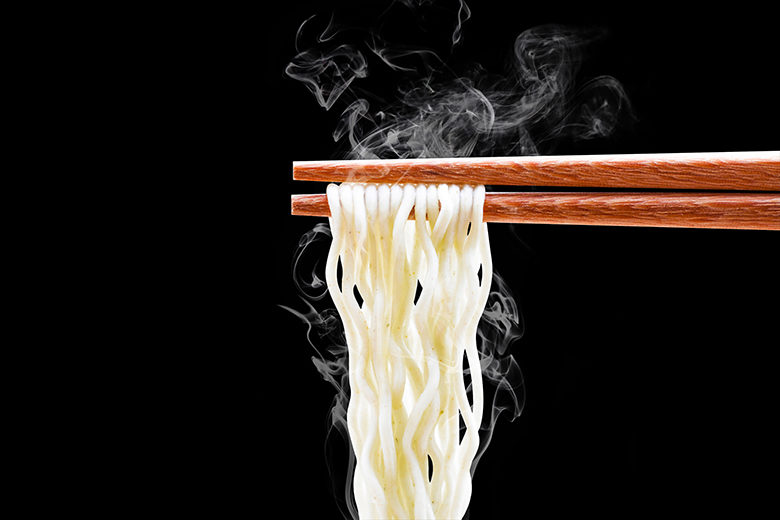
They’re some of the world’s oldest and simplest utensils: chopsticks. Used by about one-fifth of the world’s population, especially in East and Southeast Asia, it’s believed that chopsticks originated in China at least 5,000 to 7,000 years ago. Documentation from the Han Dynasty supports their use as eating utensils around 220 B.C.
Chopsticks are believed to have originated as a cooking utensil rather than dining utensils. The increased use of fire and development of various cooking methods led to the need for cooking utensils to avoid injuries. While spoons once were preferred, people over time came to favor chopsticks because they could easily pick up a growing variety of food items such as noodles, dumplings and sticky rice.
Today, chopsticks are sold at most Asian supermarkets and online. The most common types are made of wood or bamboo and cost between $5 and $10 for multiple pairs.
Mastering the Technique
A set of chopsticks consist of two identical sticks that are used together like tongs in one hand. One chopstick functions as the base, which does not move; secure it by the arch between the thumb and index finger and support it by the first joint of the ring finger. Hold the other chopstick by the tips of the thumb, index finger and middle finger, as if you’re holding a pencil. Move the top stick up and down, like you’re drawing a vertical line with a pencil, and pinch food between the two sticks.
Cooking with Chopsticks
Chopsticks also are used in food preparation. Generally, these are longer to maintain distance from hot surfaces and heat sources and allow for precise fine motor movements to prepare a dish without touching the food. Use chopsticks to whisk eggs, stir noodles in boiling water, rotate food when frying, garnish prepared foods and selectively pick up and transfer food items.
Global Varieties
Chopsticks used as eating utensils typically are 9 to 10½ inches long; those used as cooking utensils are 12 inches or longer. Commonly made of bamboo, wood or metal, chopsticks come in different body shapes such as round, squared or flat.
Their shape and material vary by region and intended use. In China, where people often dine in groups around a large table, chopsticks generally have a square body, rounded ends and are longer (typically 10½ inches) to more easily reach food from a distance. In Japan, it is common to use chopsticks to pick up the vegetables in soup. Japanese chopsticks tend to be thinner and pinpointed at the end, which provides finer motion to pick small bones out of fish. Chopsticks in Korea generally are made of metal, have a flat body and are used with spoons during meals.
Cleaning Up
To clean chopsticks, wash with soapy water and stand them in a jar or cup to air dry. They typically do not need to be scrubbed hard. Depending on the material, they may be dishwasher safe; chopsticks made of wood or finished with lacquer or precious metal may not be suitable for the dishwasher.
References
Magazine S, Bramen L. The History of Chopsticks. Smithsonian Magazine website. https://www.smithsonianmag.com/arts-culture/the-history-of-chopsticks-64935342/. Published 2022. Accessed April 13, 2022.
Wang Q. Chopsticks. Cambridge: Cambridge University Press; 2015.
Surprising Facts About the History of Chopsticks. FifteenEightyFour, Academic Perspectives from Cambridge University Press website. http://www.cambridgeblog.org/2015/03/surprising-facts-about-the-history-of-chopsticks/. Published 2022. Accessed April 13, 2022.
How To Use Chopsticks. Food Unfolded. https://www.foodunfolded.com/article/how-to-use-chopsticks. Published 2022. Accessed April 13, 2022.
Chopsticks. Webstaurant Store website. https://www.webstaurantstore.com/search/chopsticks.html. Accessed May 24, 2022.

